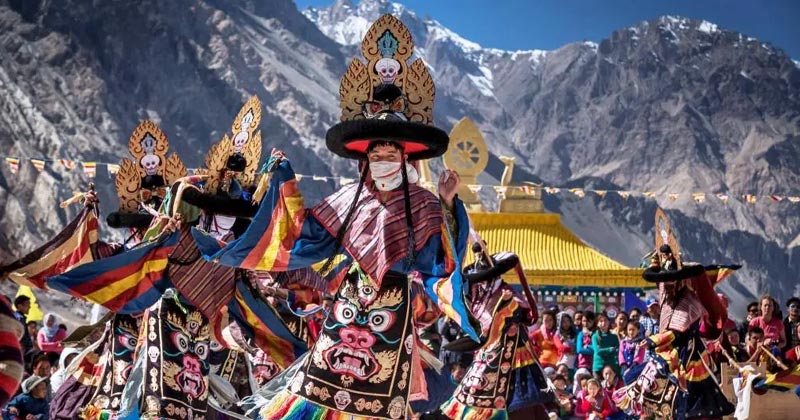Losar is one of the most important festivals celebrated in Tibet, Bhutan, Nepal, and parts of India. It is the Tibetan New Year festival that is celebrated for two weeks and is marked by numerous traditional rituals and cultural activities. The festival is not only a time for people to usher in the New Year but also to honor their ancestors and seek the blessings of the deities.
The word “Losar” is derived from two Tibetan words: “Lo” means “year,” and “sar” means “new.” The festival usually falls in February or March and is determined by the lunar calendar. The celebration of Losar lasts for three days, and each day has its significance and rituals.

The first day of Losar is known as “Lama Losar,” and it is a day dedicated to the monks and nuns. On this day, people visit the monasteries to offer their prayers and receive blessings from the lamas. The monks and nuns perform various religious rituals and ceremonies, including the Cham dance, a traditional masked dance that is performed to drive away evil spirits.

The second day of Losar is called “Gyalpo Losar” or “King’s Losar,” and it is a day of merry-making and feasting. Historically, this day was celebrated as a tribute to the secular leader of Tibet, the Dalai Lama. Nowadays, people gather with their friends and families to exchange gifts, share traditional foods and drinks, sing, dance and have fun.

The third day of Losar is called “Choe-kyong Losar,” which means “New Year’s Eve.” This day is considered the most important day of the festival, and it is marked by various rituals and ceremonies. People wake up early in the morning, wear their best clothes, and visit the monasteries to offer prayers and receive blessings. They also prepare traditional foods and drinks, including “kapse,” a deep-fried pastry, and “chang,” a barley beer, to be shared with friends and family.

The celebration of Losar also includes the “King’s Procession,” which is a traditional parade held on the second day of the festival. The parade features musicians, dancers, and actors dressed in traditional costumes and masks. The participants carry banners and flags, and they march through the streets, performing traditional dances and songs.
Another significant ritual associated with Losar is the creation of the “Losar Sand Mandala.” This is a traditional Tibetan art form where monks create intricate and colorful mandalas using sand. The mandalas are created over several days, and they represent the universe and its elements. At the end of the festival, the mandalas are dismantled and the sand is poured into a river or lake as a symbolic gesture of impermanence.

Also Read: Planning To Explore The North-East Beauty Of India? Do Check Out These Places To Visit In Sikkim
In conclusion, Losar is a vibrant and colorful festival that celebrates the start of a new year and the hope for a better future. The festival is a time for people to gather, share traditional foods and drinks, exchange gifts, and participate in cultural activities. It is also an occasion to honor their ancestors, seek blessings from the deities, and drive away negative energies. The festival offers a glimpse into the rich cultural heritage of Tibet and its people, and it is an experience that is truly unique and unforgettable.


